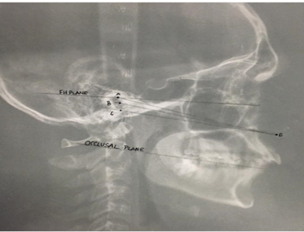Abstract
The aim of the study is to evaluate the deviation of the occlusal plane to three different points of the ala-tragus line among different age group in South Indian population. Incomplete denture prosthetics, there are four basic criteria that every satisfactory denture should achieve. They are aesthetics, phonetics, mastication and comfort. These requirements are attained by adopting proper techniques in complete denture construction. Thus, the exact determinations of the artificial occlusal plane in the upper occlusal rim while jaw registration procedures play an important role in attaining this objective. Considering the importance of the occlusal plane orientation in complete denture prostheses, planes which are steeper or inclined to the occlusal plane can be unaesthetic or cause difficulty in establishing balanced occlusion or centric occlusion, a study is done to evaluate the deviation of the occlusal plane to three different points of ala-tragus line among 15-20 years, 20-30 years, 30-40 years age group individuals. Comparison of OP angle measurements with CP1, CP2 and CP3 within the four age groups. In the 15-20 years & 30-40 years age group, CP1 measurement was closest to OP followed by CP2. In the 20-30 year age groups, CP2 measurement was closest to OP followed by CP1. In the 40-50 year age groups, CP2 measurement was closest to OP followed by CP3. This study indicates or younger individual who is less than 40 years when the complete denture is constructed a superior point of external auditory meatus has to be taken as reference point & in an individual who is above 40 middlemost points of external auditory should be taken as reference point.
Full text article
Authors

This work is licensed under a Creative Commons Attribution-NonCommercial-NoDerivatives 4.0 International License.

